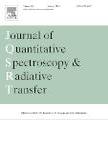版权所有:内蒙古大学图书馆 技术提供:维普资讯• 智图
内蒙古自治区呼和浩特市赛罕区大学西街235号 邮编: 010021

作者机构:Dalian Univ Technol State Key Lab Struct Anal Ind Equipment Dalian 116024 Peoples R China Northeastern Univ Sch Met & Mat Shenyang 110004 Peoples R China
出 版 物:《JOURNAL OF QUANTITATIVE SPECTROSCOPY & RADIATIVE TRANSFER》 (定量光谱学与辐射传递杂志)
年 卷 期:2011年第112卷第8期
页 面:1336-1342页
核心收录:
学科分类:070207[理学-光学] 07[理学] 08[工学] 0703[理学-化学] 0803[工学-光学工程] 0702[理学-物理学]
基 金:National Nature Science Foundation of China [10872050, 50974146, 51002019] Fundamental Research Funds for the Central Universities
主 题:Inverse radiation Non-gray medium Zonal method Complex-variable-differentiation method
摘 要:Non-gray radiative properties of an absorbing, emitting, non-gray participating medium significantly increase the difficulty of solving the radiative transfer equation. This paper presents a new inverse approach for the equivalent gray radiative property of a non-gray medium. In this approach, the unknown equivalent gray radiative properties are treated as the optimization variables, and the errors to be minimized are the differences between the calculated temperatures and the measured ones. The measured data are simulated by solving the direct problem, in which a modified zonal method together with the Edwards exponential wide-band model is employed. In the inverse problem, the sensitivity coefficients are first calculated by the complex-variable-differentiation method, and then the least-square method and the Newton-Raphson iterative method are employed to minimize the target function. The effectiveness and efficiency of the inverse problem are demonstrated in an example, and another case is given to show the accuracy and potential of the proposed algorithm. The effects of the measurement error and the number of measurement points on the accuracy of the inverse analysis are also investigated in detail. (C) 2011 Elsevier Ltd. All rights reserved.